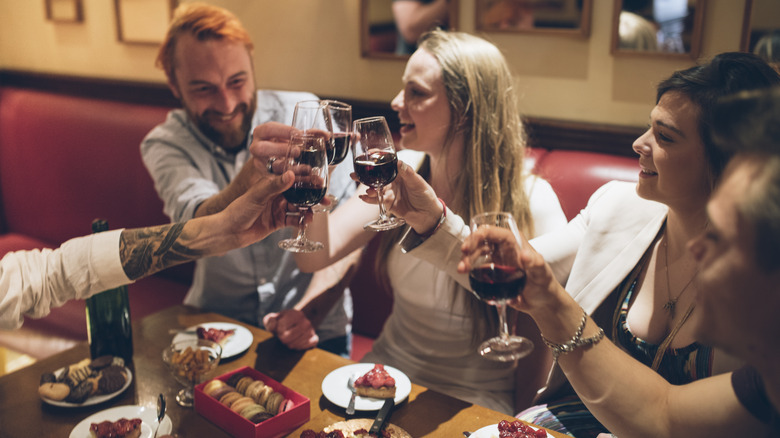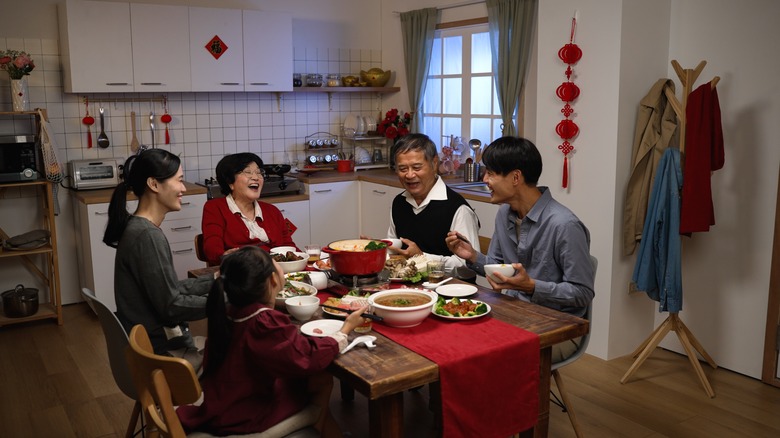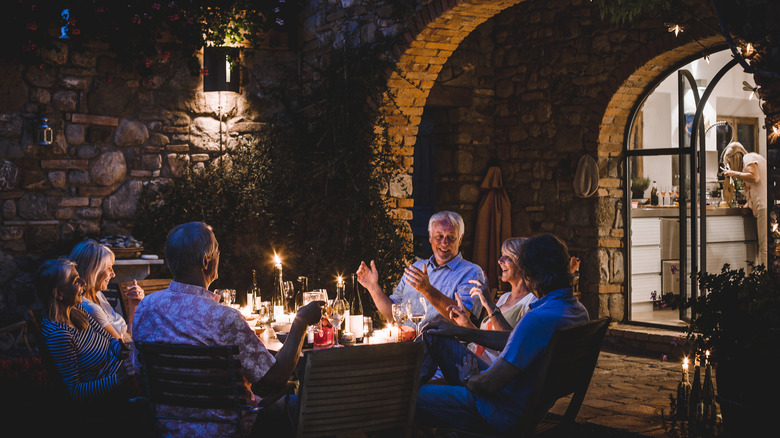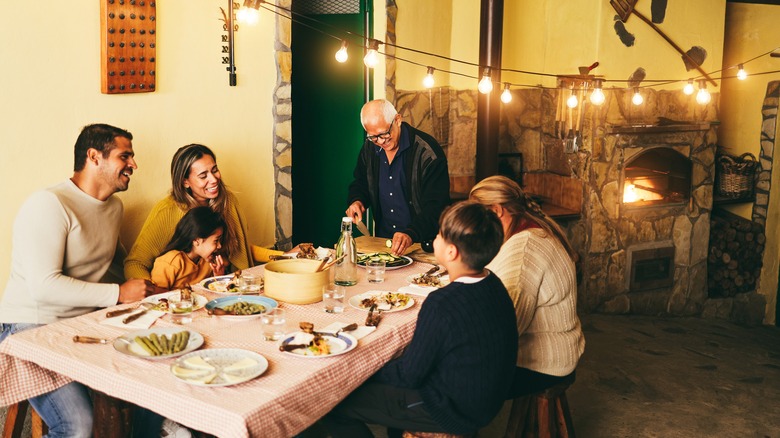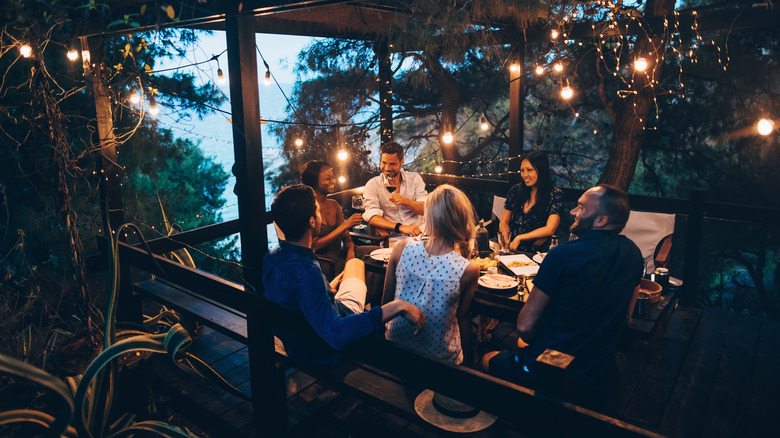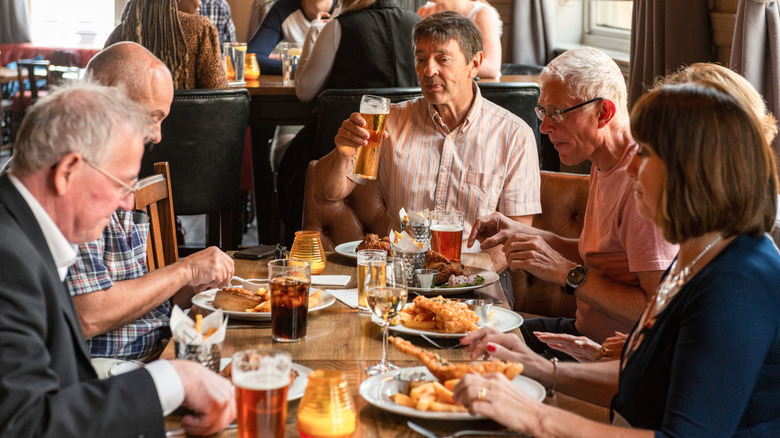The Typical Dinner Times In 12 Countries Around The World
The importance of food in human lives is undeniable. It has been an integral part of every society throughout history. It also gave birth to a remarkable diversity of culinary traditions and dining customs. This cultural uniqueness of each country is what makes it very hard to pick a universal mealtime.
In the past, people from ancient civilizations like Mesopotamia and Greece typically had only one or two meals a day, with the main meal being eaten in the evening at sunset. Most of the eating habits were simply dictated by nature. Thanks to industrialization and globalization, the world has adopted a more uniform three-meal structure consisting of breakfast, lunch, and dinner. Although mealtimes still vary widely across cultures.
From early bird diners in Norway to nocturnal dining in the Mediterranean, we've uncovered the diverse dinner customs in various countries worldwide; each offers a glimpse into its culture and traditions, and it's truly fascinating.
Spain -- 9:00-10:00 p.m.
For Spaniards, dinner is a special occasion for relaxing, socializing, and indulging in life's pleasures. It's not just a quick task to check off but a chance to savor good food, company, and leisure time. In fact, mealtime is considered one of the most important moments of the day in Spain. Spaniards also have a habit of dining quite late into the evening, a defining aspect of their gastronomic culture.
While many European countries have their evening meal around 6 or 7 p.m., Spaniards usually sit down for dinner around 9 p.m. or later. This tradition is rooted in the country's daily routine and lifestyle. The siesta, a customary midday break, plays a significant role in shaping Spaniards' dining habits. With a two-hour lunch break, it's common for Spaniards to extend their workday until the early evening, resulting in a later dinner time. The siesta offers people a chance to take a break, recharge, and socialize before returning to work.
The relaxed pace of life in Spain also influences the restaurant scene. Many establishments serve dinner at 8 or even 9 p.m. Attempting to dine earlier may limit your options, so you should definitely steer towards tourist-oriented eateries.
France -- 8:00-9:00 p.m.
In France, dinner is a time for socializing and spending time with family. TVs are switched off, and lively conversations commence. Typical dinner starts at 8 p.m. or later and consists of a simple meal of bread with soup or salad, followed by cheese or yogurt for dessert. Although, the French make up for this with the most important meal of the day — substantial lunches that include several hearty courses.
French families with children often start dinner as late as 9 p.m., while restaurants usually begin dinner service around 7 p.m. In Paris, dining out later is expected, with reservations typically starting at 8:00 or 8:30 p.m. But why do the French eat dinner so late?
The timing of mealtimes in France is mainly influenced by working hours. Unlike the typical 9-to-5 schedule in the United States, standard working hours in France usually run from 9 or 10 a.m. to 6 p.m. When people return home, they need time to settle in. Gathering around the table, engaging in conversation, and savoring the meal for about an hour is customary.
China -- 6:00-8:00 p.m.
As the clock hits 6 p.m., Chinese families come together to share a comforting feast. This long-standing tradition is all about communally enjoying hearty dishes with a steaming bowl of rice at the center of the table. Unlike in the West, milk and bread aren't usually part of the meal.
For hardworking Chinese citizens, dinner is a crucial part of their daily routine. It's a time to unwind and connect with loved ones, especially after a long day at work or school. The meal usually lasts from 6 p.m. to 8 p.m., giving families plenty of time to enjoy the food and each other's company. After dinner, conversations and social games often go on late into the night.
If you're dining out, the busiest time for restaurants in China is typically around 7 p.m. Most places close by 10 p.m., but the bustling snack streets stay open late, offering a range of authentic Cantonese treats like dan dan noodles, soup dumplings, or authentic barbeque.
Italy -- 8:00-10:00 p.m.
Italian culture places great importance on food, and mealtimes are significant daily markers. Dinner time varies among different regions. In the north, dinner is typically served earlier, with some Italians dining as early as 7 p.m. In contrast, the south leans towards a later dinner time, usually after 8 p.m. Central Italy falls somewhere in the middle, with dinner usually served between 8 and 9 p.m. Regardless of the region, dinner is traditionally served after sunset.
It's unusual to find restaurants in Italy that serve dinner before 7 p.m., even in areas that typically serve earlier. Some restaurants may cater to tourists by offering earlier dinner options, but this is not the norm. If you feel peckish between mealtimes, you can usually grab a panini sandwich at a bar, particularly in smaller cities and towns where it's uncommon to find establishments open for a late lunch or early dinner.
The late dinner time in Italy is influenced by various factors such as climate, work hours, and the importance of family dining together. Warm summer weather drives a preference for cooler evening temperatures, while typical workday structures and commuting patterns impact when Italians finish work.
Mexico -- 9:00-10:00 p.m.
As you traverse Mexico's vast and diverse land, it's essential to acquaint yourself with the local customs. This will prevent you from being the outsider who insists on eating at non-traditional hours. In Mexico, mealtimes are a vital aspect of daily life and are treated with utmost importance. By familiarizing yourself with them, you can relish the local cuisine like a native.
In contrast to many Western countries where dinner is consumed early in the evening, Mexicans prefer a later dining experience. Arriving at a restaurant at 6 p.m. might leave you alone at your table or disrupt the staff's preparations for the evening. To fully engage in the local culture, it's best to embrace the traditional schedule and dine around 9 p.m.
Lunch is typically enjoyed between 2 p.m. and 3 p.m., and Mexican cuisine follows the trend of larger meals earlier in the day, pushing dinner late. That's why many Mexicans opt for light snacks at dinner, with street food vendors serving famous tacos al pastor around 9 p.m.
Brazil -- 6:00-8:30 p.m.
Food in Brazil is more than just sustenance; it is a socializing activity. Dining together is very important in Brazil, placing the value on family time. That includes the little ones as well. In Brazil, families often dine out with their children, instilling table manners and etiquette from an early age. This is only possible because schools start early and finish by the afternoon, allowing students to enjoy meals with their families.
Brazilians eat three main meals per day and snacks in between. Lunch and dinner are the prime times for socializing, relaxation, and indulging in wholesome cuisine. Dinner, in particular, is a family event that takes center stage in the evening. Compared to the United States, it is served a bit later, around 7 p.m. or 8 p.m., and sometimes consists of leftover lunch items, creating a sense of continuity in the day. Family members come together to enjoy a meal; rice and beans are usually served with some form of meat. Brazilians also love Italian flair, so eating classic lasagna or pizza for dinner is very popular.
Greece -- 10:00-11:00 p.m.
In Greece, one should expect dinner to be served much later than in other countries. And while the timing is flexible, it's still very late, with dinner not being served until around 10:00 p.m. or later. Some visitors may find this hard to adapt to, but it is deeply rooted in Greek culture. Dining late encourages a more relaxed and leisurely experience. It's an opportunity for people to come together, share stories, and fully immerse themselves in life's simple pleasures.
There are several reasons why dinner is served so late in Greece. Firstly, the largest meal of the day, lunch, is typically enjoyed around 2 or 3 p.m. This is a time when families gather and enjoy a substantial spread of dishes. The Mediterranean influence is evident here, as lunch becomes a social event lasting two to three hours. Secondly, daytime temperatures can be unbearable during the hot summer months. Many Greeks take a break in the afternoon to escape the heat and rest. As a result, dinner is shifted to a later hour when the temperature finally cools and becomes bearable.
United States -- 6:00-7:00 p.m.
The temptation of indulging in a very late dinner is a pleasure that only a few choose to savor in the U.S. Some Americans make a case for having dinner between 6:00 p.m. and 7 p.m., which is relatively early in several European countries.
Historically, late dinners were never really a common practice in the United States. Before the industrial revolution, Americans ate dinner around the time Italians now eat lunch. With the shift from farm to factory work in the 18th and 19th centuries, the standard 9-to-5 workday became prevalent, and dinner gradually shifted to 5 p.m. or 6 p.m. to accommodate family gatherings.
Today, the idea of an early evening dinner still holds some significance, representing the values of the middle class. It was seen as an opportunity to practice proper dining etiquette and enhance social status. Although, there is a tendency for the new generation of Americans now to choose to dine later as shifting occupations call for lifestyles that no longer fit the general norm.
Germany -- 5:00-7:00 p.m.
Germany distinguishes itself from other European countries through its unique dinner traditions. While Spaniards and Greeks have a super late dinner, Germans prefer an earlier timeline, usually falling between 5 and 7 p.m. That puts Germany on the list of early diners. Lunch and dinner timings may interchange due to personal routine, but having only one substantial hot dish per day is a practice that definitely sets the country apart.
In addition to their early dining preference, Germans also opt for lighter fare. Dinner is often referred to as "abendbrot," meaning "evening bread," reflecting the nature of the meal, which is more like a snack than a hearty, hot dish. Abendbrot usually features a delicious combination of sliced bread and flavorful cheeses, sausages, and pickles. The vast variety of bread (over 300 types) and sausage cuts available in Germany adds to the charm of this seemingly simple repast.
United Kingdom -- 6:30-8:00 p.m.
The origin of the dinner tradition in the U.K. dates back to the Middle Ages when the wealthy indulged in midday feasts called "cena." These extravagant meals showcased their affluence and power and came with strict table manners. Gradually, dinner shifted to the evenings with the advent of artificial lighting and changing work schedules.
By the 19th century, dinner became the primary meal of the day, typically consumed between 6:30 and 8:00 p.m., while Sunday continued to have a regular lunchtime "dinner hour." The name for an evening meal in the UK is a topic of much debate. While most refer to it as "dinner," a significant number of people call it "tea," making it confusing for outsiders. The term "dinner" is more commonly used in the South, while "tea" is preferred in the North.
However, the dinner versus tea divide is not solely based on social class distinctions. Middle-class Northerners use "dinner" more often than their working-class counterparts, but most people in both classes prefer "tea." In the South, both middle-class and working-class individuals predominantly use "dinner."
Knowing the difference in meal terminology can help you avoid potentially awkward social situations when invited to someone's house. "Dinner" usually refers to the evening meal, but it may still be called that at lunchtime in the North. Similarly, "tea" can refer to either the midday or evening meal, depending on the region.
Australia -- 5:00-7:00 p.m.
Australia, renowned for its relaxed lifestyle and passion for outdoor pursuits, is undergoing a fascinating transition. More and more Australians choose to dine earlier, challenging the traditional concept of a late dinner. This shift in dining habits reflects changing lifestyles, evolving family dynamics, and a desire for healthier living.
According to the Sydney Morning Herald, data pulled from Dimmi, a restaurant booking website, reveals a significant increase in Australians dining between 5 p.m. and 6 p.m. This trend is spurred by factors such as the importance of quality family time, cost-effectiveness, and a focus on wellness. Dining early aligns with a balanced lifestyle, as Australians prioritize their well-being by adopting healthier eating habits.
Consuming dinner earlier permits people to relish a nutritious meal and have time for post-dinner activities such as exercise or leisure. Notably, the trend towards early dining extends to weekends, and restaurants had to adapt to this shift by providing more flexible booking times.
Sunday dining is becoming increasingly popular as families value spending time together over a relaxed meal. The once-popular tradition of dining out on Friday nights is gradually supplanted by a desire to create cherished memories with loved ones on Sundays.
Norway -- 4:00 PM-5:00 p.m.
Dinner time in Norway is known for being quite early compared to other European countries, usually between 4 and 5 p.m. This practice dates back to Norway's agricultural past when hard work on farms required long hours. Despite the country moving away from farming, the tradition of early dinners has stood the test of time.
Norwegians tend to finish their workday earlier, giving them plenty of time to head home and prepare dinner before settling down for the night. Also, lunchtime usually falls around 11 a.m., making an earlier dinner more fitting. Although there has been a trend towards later dinner times, most Norwegians still prefer to stick to their early dinner habits. This dining culture highlights the importance of keeping traditional family practices alive.
Moreover, Norwegians also enjoy a light evening meal called "kveldsmat" between 8 and 10 p.m. This meal consists of simple spreads on bread or crackers, similar to what they have for breakfast and lunch. Kveldsmat is an excellent way to prevent hunger pangs before bedtime and requires minimal preparation, making it an ideal option for a leisurely late-night meal.


